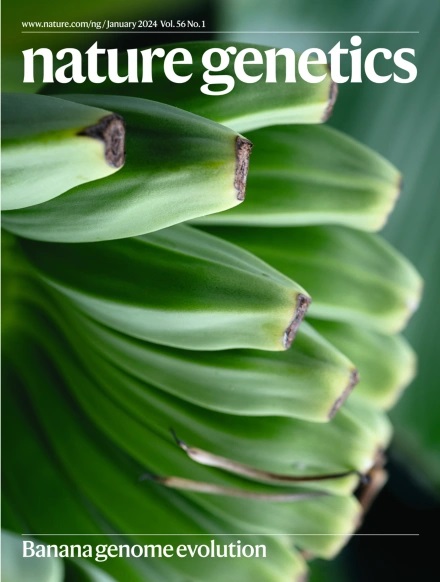胞苷二磷酸二酰基甘油合成酶2是间充质样癌症的合成致死靶点。
IF 29
1区 生物学
Q1 GENETICS & HEREDITY
引用次数: 0
摘要
基于癌症基因组改变的合成致死相互作用(SLIs)已经在治疗上进行了探索。我们研究了SLI空间作为癌细胞和正常组织中差异RNA表达的功能。功能基因组和基因表达资源的计算分析揭示了胞苷二磷酸二酰基甘油合成酶1 (CDS1)和CDS2之间的癌症特异性SLI。CDS2对细胞存活的重要性在间充质样癌症中被观察到,这类癌症CDS1表达低或缺失,约占所有癌症的一半。从机制上讲,CDS1-2 SLI伴随着脂质稳态的破坏,包括胆固醇酯和甘油三酯的积累和细胞凋亡。在cds1阴性癌细胞中进行的全基因组CRISPR-Cas9敲除筛选未发现CDS2消融引起的死亡的常见逃逸机制,表明SLI的稳健性。合成致死率由CDS2剂量驱动,并取决于催化活性。因此,CDS2可能在间充质样癌症中作为一个药理学上可处理的靶点。本文章由计算机程序翻译,如有差异,请以英文原文为准。


Cytidine diphosphate diacylglycerol synthase 2 is a synthetic lethal target in mesenchymal-like cancers
Synthetic lethal interactions (SLIs) based on genomic alterations in cancer have been therapeutically explored. We investigated the SLI space as a function of differential RNA expression in cancer and normal tissue. Computational analyses of functional genomic and gene expression resources uncovered a cancer-specific SLI between the paralogs cytidine diphosphate diacylglycerol synthase 1 (CDS1) and CDS2. The essentiality of CDS2 for cell survival is observed for mesenchymal-like cancers, which have low or absent CDS1 expression and account for roughly half of all cancers. Mechanistically, the CDS1–2 SLI is accompanied by disruption of lipid homeostasis, including accumulation of cholesterol esters and triglycerides, and apoptosis. Genome-wide CRISPR–Cas9 knockout screens in CDS1-negative cancer cells identify no common escape mechanism of death caused by CDS2 ablation, indicating the robustness of the SLI. Synthetic lethality is driven by CDS2 dosage and depends on catalytic activity. Thus, CDS2 may serve as a pharmacologically tractable target in mesenchymal-like cancers. The paralogs cytidine diphosphate diacylglycerol synthase 1 and 2 form a potentially targetable synthetic lethal relationship in mesenchymal-like cancers that involves disruption of lipid metabolism.
求助全文
通过发布文献求助,成功后即可免费获取论文全文。
去求助
来源期刊

Nature genetics
生物-遗传学
CiteScore
43.00
自引率
2.60%
发文量
241
审稿时长
3 months
期刊介绍:
Nature Genetics publishes the very highest quality research in genetics. It encompasses genetic and functional genomic studies on human and plant traits and on other model organisms. Current emphasis is on the genetic basis for common and complex diseases and on the functional mechanism, architecture and evolution of gene networks, studied by experimental perturbation.
Integrative genetic topics comprise, but are not limited to:
-Genes in the pathology of human disease
-Molecular analysis of simple and complex genetic traits
-Cancer genetics
-Agricultural genomics
-Developmental genetics
-Regulatory variation in gene expression
-Strategies and technologies for extracting function from genomic data
-Pharmacological genomics
-Genome evolution
 求助内容:
求助内容: 应助结果提醒方式:
应助结果提醒方式:


